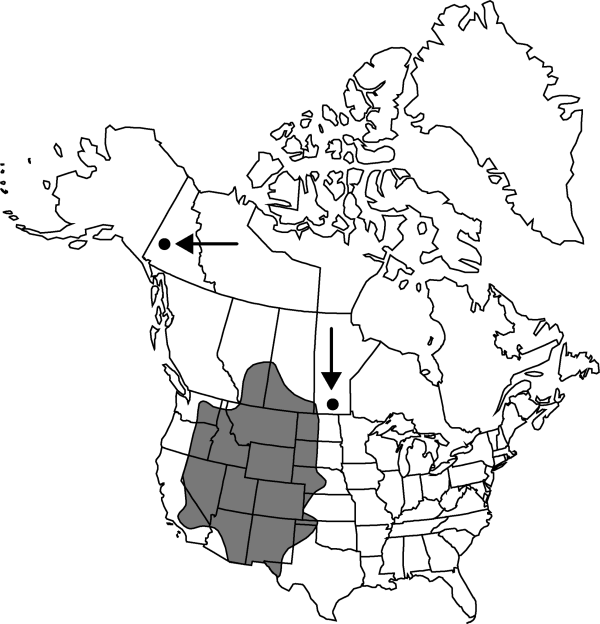Krascheninnikovia lanata
Taxon 20: 644. 1971.
Plants 1.5–5 dm; herbage white to brownish tomentose, some stellate hairs with 1 long ray. Leaves: petiole 1.5–3.5 mm; leaves of main-stems 1–3 (–4) × 1.5–3.5 (–5) cm; blade with midvein prominent abaxially, channeled adaxially, margins usually strongly revolute. Staminate flowers deciduous after anthesis. Fruiting bracts 4–7.5 mm, margins connate proximally. Utricles 2.5–3.5 mm, densely pubescent. 2n = 18, 36.
Phenology: Flowering May–Jul, fruiting through Sep.
Habitat: Foothills and flats, usually in relatively low-alkaline soils
Elevation: 500-2100 m
Distribution

Alta., Man., Sask., Yukon, Ariz., Calif., Colo., Idaho, Kans., Mont., Nebr., Nev., N.Mex., N.Dak., Okla., Oreg., S.Dak., Tex., Utah, Wash., Wyo., n Mexico
Discussion
Krascheninnikovia lanata often forms pure stands. It occurs throughout the intermountain region except in the northwest corner of central Oregon. It is called winterfat because of its nutritional importance for domestic livestock, especially sheep.
Selected References
None.
